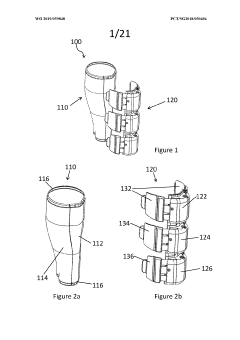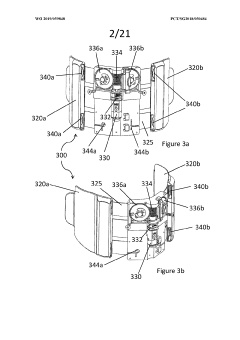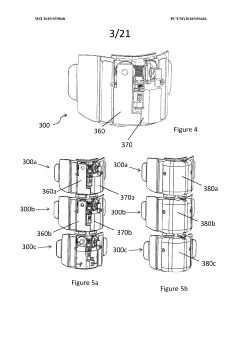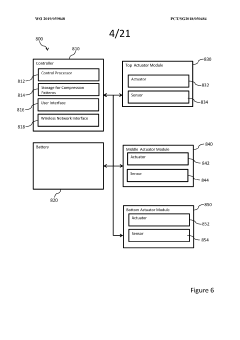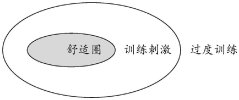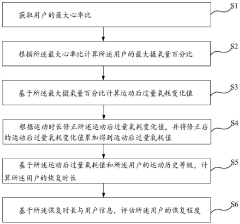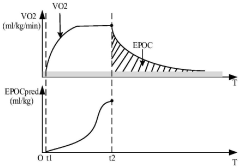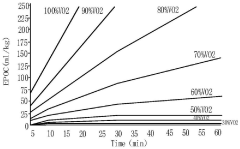Enhancing Recovery with Hypertonic Techniques: A Sports Science Approach
Hypertonic Recovery Evolution and Objectives
Hypertonic recovery techniques have emerged as a cutting-edge approach in sports science, revolutionizing the way athletes recover from intense physical exertion. The evolution of these techniques can be traced back to the early 2000s when researchers began exploring the potential of hypertonic solutions to enhance recovery processes. Initially, the focus was primarily on oral consumption of hypertonic fluids to replenish electrolytes and promote rehydration.
As the field progressed, scientists discovered the broader implications of hypertonic environments on cellular function and muscle recovery. This led to the development of more sophisticated techniques, including hypertonic baths, compression garments infused with hypertonic solutions, and targeted hypertonic injections. The objectives of these advancements were multifaceted, aiming to reduce muscle soreness, accelerate glycogen replenishment, and improve overall recovery time.
By the mid-2010s, hypertonic recovery had gained significant traction in elite sports, with professional teams and Olympic athletes incorporating these methods into their training regimens. The technology behind hypertonic techniques also evolved, with the introduction of smart textiles that could deliver hypertonic solutions transdermally and wearable devices that monitored an athlete's hydration status in real-time.
The current landscape of hypertonic recovery is characterized by a holistic approach, combining nutritional strategies, physical therapies, and advanced technologies. Research objectives now focus on optimizing the composition of hypertonic solutions for different types of athletic activities, understanding the molecular mechanisms underlying the benefits of hypertonic recovery, and developing personalized protocols based on an athlete's physiological profile.
Looking ahead, the field of hypertonic recovery in sports science aims to achieve several key objectives. These include enhancing the precision of hypertonic delivery systems to target specific muscle groups, integrating artificial intelligence to dynamically adjust recovery protocols, and exploring the potential of nanotechnology in creating more effective hypertonic solutions. Additionally, there is a growing emphasis on studying the long-term effects of hypertonic recovery techniques on athletic performance and overall health.
As the technology continues to advance, researchers are also investigating the potential applications of hypertonic recovery beyond elite sports, considering its use in rehabilitation settings and for improving recovery in everyday physical activities. The ultimate goal is to establish hypertonic recovery as a cornerstone of sports science, providing athletes with evidence-based, efficient, and safe methods to optimize their performance and longevity in their respective disciplines.
Market Analysis for Sports Recovery Solutions
The sports recovery solutions market has experienced significant growth in recent years, driven by increasing awareness of the importance of post-exercise recovery among athletes and fitness enthusiasts. This market encompasses a wide range of products and services, including hypertonic techniques, which are gaining traction as an effective approach to enhancing recovery.
The global sports recovery market was valued at approximately $9.5 billion in 2020 and is projected to reach $17.5 billion by 2026, growing at a CAGR of 10.5% during the forecast period. This growth is attributed to factors such as the rising number of sports injuries, increasing participation in sports and fitness activities, and growing demand for non-invasive recovery techniques.
Within this market, hypertonic recovery solutions are emerging as a promising segment. These techniques, which involve the use of high-concentration solutions to promote fluid movement and reduce inflammation, are gaining popularity due to their effectiveness and relatively low cost compared to other advanced recovery methods.
The target audience for sports recovery solutions, including hypertonic techniques, primarily consists of professional athletes, amateur sports enthusiasts, and fitness-conscious individuals. However, there is a growing trend of these products and services being adopted by the general population for everyday recovery and wellness purposes.
Geographically, North America dominates the sports recovery market, accounting for approximately 40% of the global market share. This is due to the region's high sports participation rates, advanced healthcare infrastructure, and early adoption of innovative recovery techniques. Europe follows closely, with a market share of around 30%, driven by the popularity of sports and fitness activities in countries like Germany, the UK, and France.
The Asia-Pacific region is expected to witness the fastest growth in the coming years, with a projected CAGR of 12% from 2021 to 2026. This growth is fueled by increasing disposable incomes, rising health awareness, and the growing popularity of sports in countries like China and India.
Key market trends include the integration of technology in recovery solutions, such as smart compression garments and app-connected recovery devices. There is also a growing demand for natural and organic recovery products, aligning with the overall shift towards healthier and more sustainable lifestyle choices.
The competitive landscape of the sports recovery market is characterized by a mix of established players and innovative startups. Major companies in this space include Hyperice, Therabody, Compex, and NormaTec. These companies are continuously investing in research and development to improve their product offerings and gain a competitive edge.
Current Hypertonic Techniques and Challenges
Hypertonic techniques have gained significant attention in sports science for their potential to enhance recovery. Currently, several methods are employed, each with its unique advantages and challenges. One prominent technique is hypertonic saline infusion, which involves administering a concentrated salt solution intravenously. This method has shown promise in rapidly restoring fluid balance and electrolyte levels, particularly after intense exercise or in hot environments. However, it requires medical supervision and carries risks of fluid overload if not carefully monitored.
Another widely used approach is oral consumption of hypertonic solutions, such as sports drinks with high electrolyte concentrations. These beverages are designed to replenish lost fluids and minerals more effectively than water alone. While generally safe and easily accessible, the effectiveness can vary depending on individual physiology and the specific formulation of the drink. Some athletes may experience gastrointestinal discomfort with highly concentrated solutions.
Hypertonic compression garments represent a non-invasive technique gaining popularity. These garments apply pressure to specific body areas, potentially enhancing blood flow and reducing muscle swelling. While many athletes report subjective benefits, scientific evidence regarding their efficacy remains mixed, and optimal pressure levels and wearing durations are still debated.
A more recent innovation in hypertonic recovery is the use of hypertonic cryotherapy. This involves brief exposure to extremely cold temperatures in a hypertonic environment, typically through specialized chambers or localized applications. Proponents claim it can reduce inflammation and accelerate recovery, but long-term effects and optimal protocols are still under investigation.
Despite these advancements, several challenges persist in the field of hypertonic recovery techniques. One major issue is the lack of standardization in protocols and measurements across studies, making it difficult to compare results and establish definitive guidelines. Additionally, individual variability in response to hypertonic treatments poses a significant challenge, as what works for one athlete may not be as effective for another.
Another hurdle is the potential for adverse effects, particularly with more invasive techniques like intravenous infusions. Ensuring safety while maximizing benefits requires careful monitoring and personalized approaches, which can be resource-intensive in team sports settings. Furthermore, the long-term impacts of regular use of hypertonic techniques on athlete health and performance are not yet fully understood, necessitating ongoing research and longitudinal studies.
Regulatory considerations also present challenges, especially for novel hypertonic techniques. Ensuring compliance with anti-doping regulations and obtaining approval for use in competitive settings can be complex and time-consuming. As the field evolves, staying abreast of changing guidelines and adapting practices accordingly remains an ongoing challenge for sports scientists and medical professionals.
Existing Hypertonic Recovery Protocols
01 Hypertonic solutions for recovery
Hypertonic solutions are used in recovery techniques to promote fluid balance and reduce inflammation. These solutions have a higher concentration of solutes compared to body fluids, which can help draw excess fluid from tissues and improve circulation. This approach is particularly beneficial in post-exercise recovery and treating certain medical conditions.- Hypertonic solutions for recovery: Hypertonic solutions are used in recovery techniques to promote fluid balance and reduce inflammation. These solutions have a higher concentration of solutes compared to body fluids, which can help draw excess fluid from tissues and improve circulation. This approach is particularly beneficial in post-exercise recovery and treating certain medical conditions.
- Osmotic techniques for cell recovery: Osmotic techniques are employed in cell recovery processes, particularly in biotechnology and medical research. These methods utilize the principles of osmosis to manipulate cell membranes, allowing for the recovery of cellular components or the introduction of specific substances into cells. This approach is crucial in various applications, including cryopreservation and genetic modification of cells.
- Hypertonic dialysis for renal recovery: Hypertonic dialysis solutions are used in renal recovery treatments, particularly for patients with acute kidney injury or chronic kidney disease. These solutions help remove excess fluid and waste products from the blood more efficiently than standard dialysis solutions. The hypertonic nature of the solution creates an osmotic gradient that enhances the removal of fluid from the patient's body.
- Recovery of data using hypertonic algorithms: In the field of data recovery and error correction, hypertonic algorithms are employed to recover lost or corrupted data. These algorithms use advanced mathematical models to reconstruct missing information, often by leveraging the redundancy in data structures. This technique is particularly useful in telecommunications, data storage systems, and digital signal processing.
- Hypertonic environments for microbial recovery: Hypertonic environments are utilized in microbial recovery techniques, particularly in environmental and industrial microbiology. These conditions can be used to isolate specific microorganisms that thrive in high-salt environments or to recover microbial products. The hypertonic conditions create selective pressure, allowing for the recovery of desired microorganisms or their metabolites.
02 Cell preservation and recovery techniques
Hypertonic techniques are employed in cell preservation and recovery processes. These methods involve using hypertonic solutions to protect cells during cryopreservation or to recover damaged cells. The hypertonic environment helps maintain cell integrity and function during storage or after stress, which is crucial in fields such as biotechnology and regenerative medicine.Expand Specific Solutions03 Hypertonic dialysis for renal recovery
Hypertonic dialysis solutions are used in renal recovery techniques. This approach involves using dialysis fluids with higher solute concentrations to enhance fluid removal from the body, manage electrolyte imbalances, and improve overall kidney function in patients with renal disorders.Expand Specific Solutions04 Osmotic drug delivery systems
Hypertonic techniques are applied in developing osmotic drug delivery systems. These systems utilize the principle of osmosis to control drug release, where a hypertonic core draws water into the device, creating pressure that pushes the drug out through a small opening. This approach allows for sustained and controlled drug release over extended periods.Expand Specific Solutions05 Hypertonic solutions in wound healing
Hypertonic solutions are used in wound healing and recovery processes. These solutions can help reduce edema, promote wound cleansing, and create an environment that supports tissue regeneration. The hypertonic nature of the solutions aids in drawing out excess fluid from the wound area, potentially accelerating the healing process.Expand Specific Solutions
Key Players in Sports Recovery Industry
The field of hypertonic techniques for enhancing recovery in sports science is in a growth phase, with increasing market size and technological advancements. The global sports medicine market, which encompasses recovery techniques, is projected to expand significantly in the coming years. Technological maturity varies among key players, with established companies like Koninklijke Philips NV and DENSO Corp. leading in innovation. Emerging players such as Sky Medical Technology Ltd. and Revalesio Corp. are introducing novel approaches. Academic institutions like New York University and University of South Australia contribute to research advancements. The competitive landscape is diverse, with medical device manufacturers, research institutions, and specialized sports science companies vying for market share and technological breakthroughs in hypertonic recovery techniques.
Sky Medical Technology Ltd.
Revalesio Corp.
Innovative Hypertonic Recovery Research
- A compression device that applies graduated pressure to multiple zones simultaneously, with a sequence of compression cycles including a compression period followed by a relaxation period, ensuring continuous blood flow by varying pressure between zones to mimic the calf muscle pump action, thereby enhancing venous return and reducing muscle soreness.
- By obtaining the user's maximum heart rate ratio, calculating the maximum oxygen uptake percentage, correcting the excessive oxygen consumption change value after exercise, and combining the exercise history level and user information, the recovery time and degree of recovery are evaluated to provide personalized fitness guidance.
Athlete Safety and Regulatory Compliance
In the realm of sports science and athlete recovery, the implementation of hypertonic techniques must be carefully balanced with athlete safety and regulatory compliance. The use of hypertonic solutions and techniques for enhancing recovery has gained significant attention in recent years, but it is crucial to consider the potential risks and ensure adherence to established guidelines and regulations.
Athlete safety is paramount in any sports-related intervention. When employing hypertonic techniques, such as hypertonic saline solutions or hyperosmolar drinks, careful consideration must be given to the potential side effects and contraindications. These may include electrolyte imbalances, dehydration, or gastrointestinal distress. It is essential to conduct thorough health assessments and individualize the application of hypertonic techniques based on an athlete's specific physiological profile and medical history.
Regulatory bodies in sports medicine and anti-doping agencies have established guidelines and protocols regarding the use of recovery techniques and substances. Compliance with these regulations is crucial to maintain the integrity of sports competitions and protect athletes' health. Sports organizations, medical professionals, and athletes must stay informed about the latest updates in regulatory frameworks, including the World Anti-Doping Agency (WADA) prohibited list and sport-specific regulations.
The implementation of hypertonic techniques should be accompanied by comprehensive monitoring and documentation processes. This includes regular health check-ups, performance assessments, and detailed records of the techniques applied and their outcomes. Such documentation not only ensures athlete safety but also provides valuable data for ongoing research and refinement of recovery protocols.
Education and informed consent are critical components of athlete safety and regulatory compliance. Athletes, coaches, and support staff should receive thorough training on the proper use of hypertonic techniques, potential risks, and the importance of adhering to established protocols. Informed consent procedures should be in place to ensure athletes fully understand and agree to the recovery methods being employed.
Collaboration between sports scientists, medical professionals, and regulatory bodies is essential to develop and maintain best practices in the application of hypertonic techniques. This interdisciplinary approach helps to address emerging safety concerns, refine protocols, and ensure that recovery methods remain within the bounds of ethical and regulatory standards.
As the field of sports science continues to evolve, ongoing research and evaluation of hypertonic techniques are necessary to validate their efficacy and safety. This includes long-term studies on the effects of repeated use, potential interactions with other recovery methods, and the impact on different athlete populations. Such research will contribute to the development of evidence-based guidelines that balance performance enhancement with athlete well-being and regulatory compliance.
Performance Metrics and Efficacy Assessment
Assessing the efficacy of hypertonic techniques in enhancing athletic recovery requires robust performance metrics and evaluation methods. These metrics serve as quantifiable indicators of an athlete's physiological state and recovery progress, enabling sports scientists and coaches to make data-driven decisions about training and recovery protocols.
One key performance metric is muscle power output, which can be measured through various tests such as vertical jump height, sprint times, or isokinetic dynamometry. These assessments provide insights into the athlete's explosive strength and power, which are often compromised following intense exercise or competition. By comparing pre- and post-recovery measurements, researchers can quantify the effectiveness of hypertonic techniques in restoring muscle function.
Another crucial metric is the rate of perceived exertion (RPE), a subjective measure of how hard an athlete feels they are working. While not a direct physiological measure, RPE can offer valuable insights into an athlete's readiness to train or compete. A lower RPE score following a hypertonic recovery protocol may indicate improved recovery and reduced fatigue.
Blood lactate concentration is a widely used biochemical marker for assessing recovery. Elevated lactate levels are associated with muscle fatigue and decreased performance. Monitoring lactate clearance rates after applying hypertonic techniques can provide objective data on the efficacy of these methods in accelerating metabolic recovery.
Heart rate variability (HRV) has gained prominence as a non-invasive measure of autonomic nervous system function and overall recovery status. Increased HRV is generally associated with better recovery and readiness to perform. By tracking changes in HRV following hypertonic interventions, researchers can evaluate the impact on the athlete's physiological stress and recovery.
Inflammatory markers such as creatine kinase (CK) and C-reactive protein (CRP) can be measured through blood tests to assess muscle damage and systemic inflammation. A reduction in these markers following hypertonic recovery techniques would suggest enhanced recovery and reduced muscle damage.
Range of motion (ROM) and flexibility assessments are particularly relevant for evaluating the efficacy of hypertonic techniques in addressing muscle stiffness and soreness. Improved ROM following treatment can indicate reduced muscle tension and enhanced recovery.
To ensure the validity and reliability of these assessments, it is crucial to establish standardized testing protocols and control for confounding variables such as time of day, nutrition, and prior exercise intensity. Additionally, employing a combination of these metrics provides a more comprehensive evaluation of recovery status, as no single measure can fully capture the complex nature of athletic recovery.
